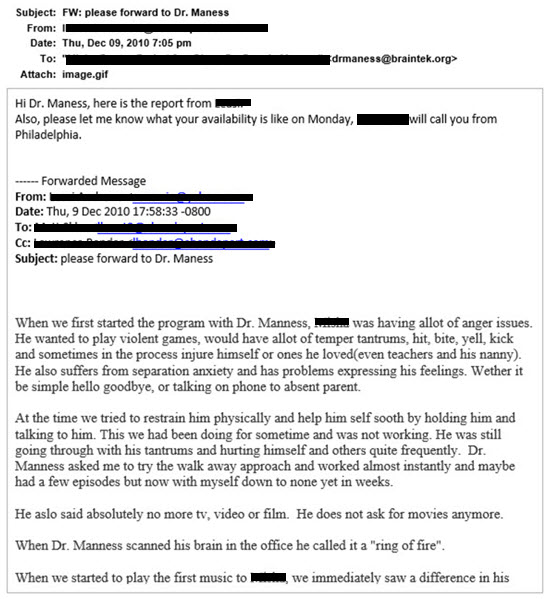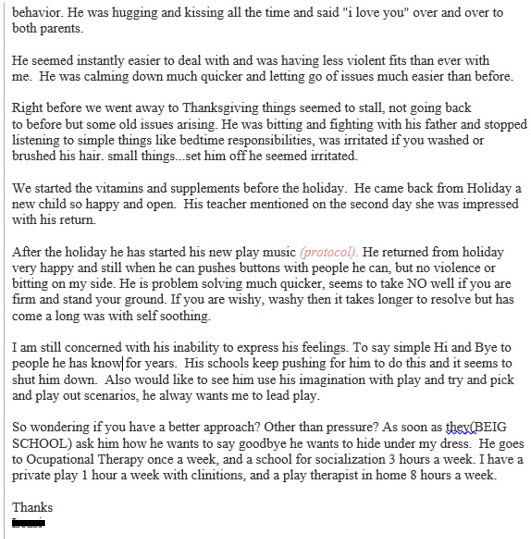Case History - Childhood Anger
I am often asked if we work with young children with behavioral issues, ADD, OCD, or on the Autism spectrum.
I am proud to say our BRE practitioners not only work with these children but have also enjoyed a high margin of success.
In this article, I want to share how I think my way through the assessment results and what I am looking for when doing the evaluation.
A family brought their 3 year old child to us for behavioral issues. Yes, anger was one of the most obvious concerns for the family. This goes back to the saying where there is smoke there is fire. The smoke (anger) has a root cause whether the child is 3 or 40 years of age.
The BRE assessment looks at 150 markers in the brain and reviews the active neural pathways. Let’s stop there for a moment. What is a neural pathway?
The smartest kid in the nursery or the brightest kid on Wall Street is not necessarily the one with the largest brain nor the highest I/Q. It is the one who has employed the most connections within their neural environment. So again, what is a neural pathway?
To over simplify, let’s look at vision. The eyes see the word and the brain assembles the word with the rest of the words in the sentence. (Neural Connections) How, the brain has made sense of what you read, now it sends the information from short term memory to long term memory; through what? You guessed it; neural connections. Now, it is test time and you have to recall what you read. How does that happen? Memory? Sure memory is considered but how do you get the memory from it’s resting place to the brain’s executive center through the arm to the fingers to the pencil to the paper? Yep, that’s neural connections.
Without those neural connections, one would have what I call dangling thoughts. Those dangling thoughts don’t haven’t been employed therefore are useless to the brain and therefore pruned by the brain. Want to know why you can’t remember? Yeah, those darned dangling thoughts.
O.K. Back to the child.
I reviewed the child’s behavior while in the office. I also received a lot of good information through the parents.
This child is bright and meticulous, inquisitive. He has a mind for numbers, measurements, and leans toward being linear thinker. A linear thinker sees the landscape which requires logic and the response of the brain’s executive center. The child has not developed this area of the brain as yet. Therefore when he experiences a challenge, he looks for a solution, not finding a solution becomes frustrated then acts out.
Now, let’s consider the child we are working with.
- He is three years old.
- When he faces a challenge, has no solution, he becomes frustrated, angry and acts out.
- He has the propensity to become enraged and violent for his age.
- He can also be cooperative, friendly and engages.
- He enjoyed watching action TV and movies
- He was involved multiple hours daily in TV.
Anger can be brought about by several types of challenges. I reviewed the brain imaging and other BrainTek assessments and found challenges with the vestibular system, limbic, and basal ganglia.
Vestibular challenges can often be lessened, reversed or corrected.
As soon as a client begins our program rapid changes can be seen. For example, frustration, anger, the way a child will hold a pencil, handwriting skills, focus, attention and even dyslexic symptoms have begun to fade and disappear from their lives.
The accuracy of the BRE assessment is such because its information is like pealing back the layers of an onion. The outer information sees the symptoms; in this case anger.
- That layer is pealed back by the assessment to show what is prompting the outburst, frustration or anger.
- The next layer pealed back takes us closer to the neural connections of the brain that is showing up as challenged in the summary report. In this case, the limbic, basal ganglia, visual cortex, cerebellum and central motor cortex were called to light.
- The next layer took me to the amygdala then to the adrenal glands.
Now, a picture is beginning to develop.
Testing with our BRE protocols make a difference.
What I saw in the assessment was great stress but what was causing the stress.
Looking at the Summary Report and the protocol the computer suggested, I was able to see something that is very common in young children. Based upon the behavioral markers, the following became clear.
This three and a half year old struggled with a variety of tests related to the inner ear and vestibular system and anger issues while acting out.
Research shows that most people with vestibular challenges are very bright. Many of these children have a higher than normal I/Q’s. Parents and teachers often tell us how well-adjusted the children in a normal active life can be brilliant, well behaved, make great decisions and yet they have extreme challenges in learning. We also often hear with older children that the child is not learning to their potential.
Why do I consider Vestibular challenges when reviewing the child’s results? Why would I consider vestibular challenges when the child appears to have good balance?
Children who experience inner ear or vestibular challenges may also experiencing learning and behavior issues.
The inner ear and vestibular system challenges seem to control our rhythm in relationship to our motor skills. Besides physical stability and balance it introduces other challenges such as;
The inner ear and vestibular system challenges seem to control our rhythm in relationship to our motor skills. Besides physical stability and balance it introduces other challenges such as;
- Challenges in in reading and comprehension where the eyes are taking in more information per millisecond than the mind can comprehend;
- this imbalance is a contributor to lack of focus and attention.
- Challenges with handwriting, speech and language which also promote learning challenges or disorders.
- Timing of their speech causing slowness in speech, rapid speech and even stuttering.
Visual signs to watch for are:
- It can cause frustration, discouragement to learning and school, family and friends and promotes a lack of self-confidence and self-esteem.
- The child will reach for activities that promote ways for them to feel better about themselves or give them the feeling of achievement. This can include increased time with the TV or computer or increased time with video games as the higher scores give them bonus points in their social lives.
- School work lags, homework assignments missed, poor grades and challenges in the classroom.
- The child shows frustration, behavior is challenging, lack of cooperation.
- A sensitivity to movement such as car sickness, standing in certain environments and spinning around.
The BRE Program creates a customized plan specific to the needs of the child.
BRE protocols entrain the brain to communicate between target areas of the brain. Combined with our brain exercises and BRE protocols, mental exercises and physical techniques support the protocols to help develop and support new neural pathways.
The BRE signals are embedded into soothing music making it enjoyable for playtime or bedtime.
Anger can be brought about by several types of challenges but it is only the symptom of something deeper.
Vestibular challenges can often be lessened, reversed or corrected.
Within days after a client began our program changes could be seen.
The mother’s letter explained the anger challenges and many positive changes in just a few short days so I have included it in the letter below.
Below is the mother's letter that tells of the anger challenges and the many positive changes that took place in just a few short days.











